SOMMAIRE
If you buy an item via links on this page, we may earn a commission. Our editorial content is not influenced by commissions. Read the full disclosure.
Let’s get it out of the way early. You will experience black spot in your garden at some point. Black spot is not only common, but it impacts far more than just roses, something most people don’t know.
It’s a widespread fungal disease that can appear on many plants when the conditions are right, especially on plants with fleshy foliage in humid conditions.
Don’t worry, we’ll cover everything you need to know about black spot fungal disease, and what to do about it.
What is Black Spot?
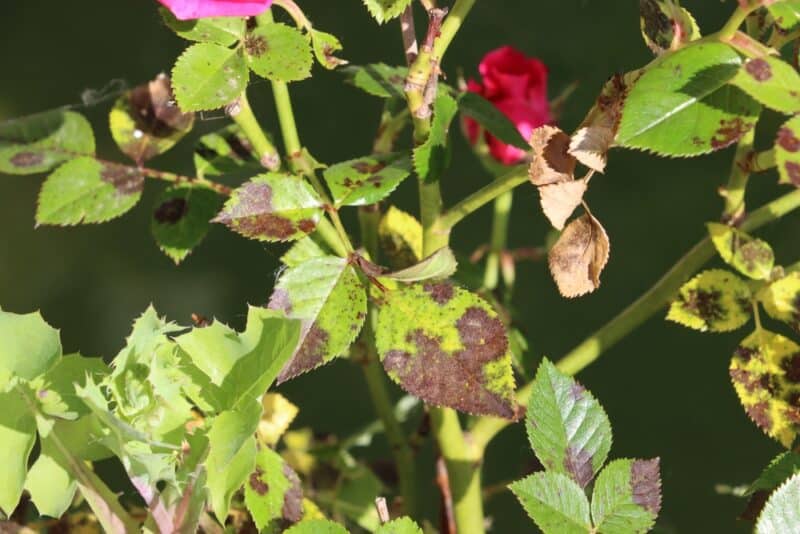
Black spot is a disease that causes black spotting to form on plants. Many species are affected, but you’ll commonly see it on roses, citrus trees, and apples.
Rose black spot (Diplocarpon rosae) is a common fungal disease well-known among rose growers. Once it appears, it is likely to spread quickly and return the following season. At which point, management is the best approach.
Citrus black spot (Guignardia citricarpa) affects citrus trees. Black spot on citrus causes a reduction in both the quality and quantity of fruit. The lesions appear on fruit and foliage. Citrus black spot is common in subtropical areas, but as environments warm up, it is something to watch for.
Apple scab, caused byVenturia inaequalis, affects apples and close relatives like crabapples, pear trees, firethorn, and mountain ash, among others. Spots appear on leaves, fruit, flowers, and even new green shoots.
You may see fruit splitting open as it develops, and it will often drop from the tree prematurely. The leaves of apple trees suffer badly with spotting and they might also drop from the tree.
Black spot starts in the spring as new growth and buds appear. The weather, humidity, and environment play a big part in the spread of this disease. If you have a wet season, watch out for black spot disease.
In addition to the pathogens listed above, black spot can also be caused by bacteria in the Pseudomonas genus.
- Glomerella cingulata infects apples
- Stegophora ulmea infects elms
- Stevensea wrightii infects succulents and cacti
- Placosphaeria spp. infects a variety of species
Plants Susceptible to Black Spot
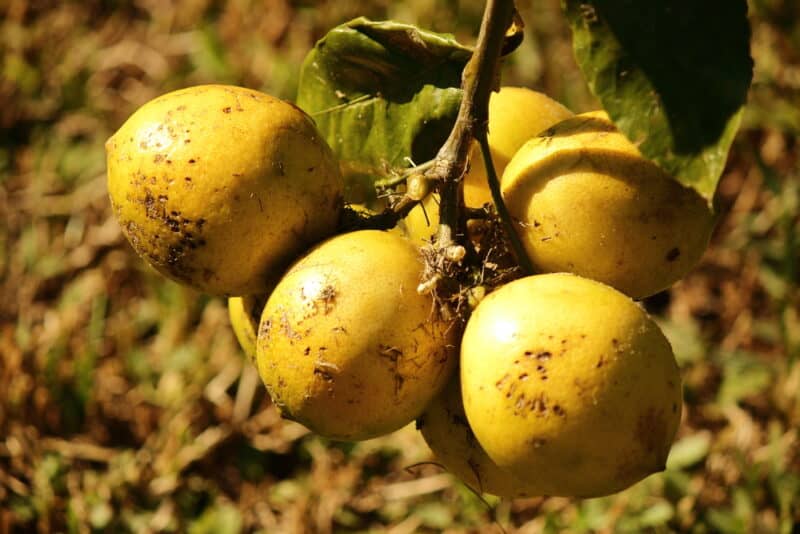
When black spot spreads, it can cover foliage, flowers, and fruit. This is on both evergreen and deciduous plants.
Lifecycle of Black Spot
The fungal disease overwinters on fallen leaves and debris, as well as on lesions still on the soft wood of the infected plant.
In spring, spores are produced in large quantities and are splashed onto plants by rain and water and in windy conditions.
When the spores get seven hours of moisture, and temperatures ranging from 75-85º with high relative humidity, infection occurs.
Within two weeks of the infection, combined with the perfect conditions, even more spores are produced and nearby plants become infected.
This cycle can repeat many times in one season, as long as the moisture levels remain long enough in humid conditions.
How Black Spot Spreads
I am going to geek out here because black spot is a fungal zoo, to be honest. The main thing to remember is when black spot appears on your plants, the conditions that cause it are generally the same, and the treatment is pretty much consistent.
The little spores of black spot fungi are called condida. They’re spread by water splash, and the leaves and fruit become affected.
A wetting period between 24 and 48 hours is needed for infection to take hold, especially in humid conditions.
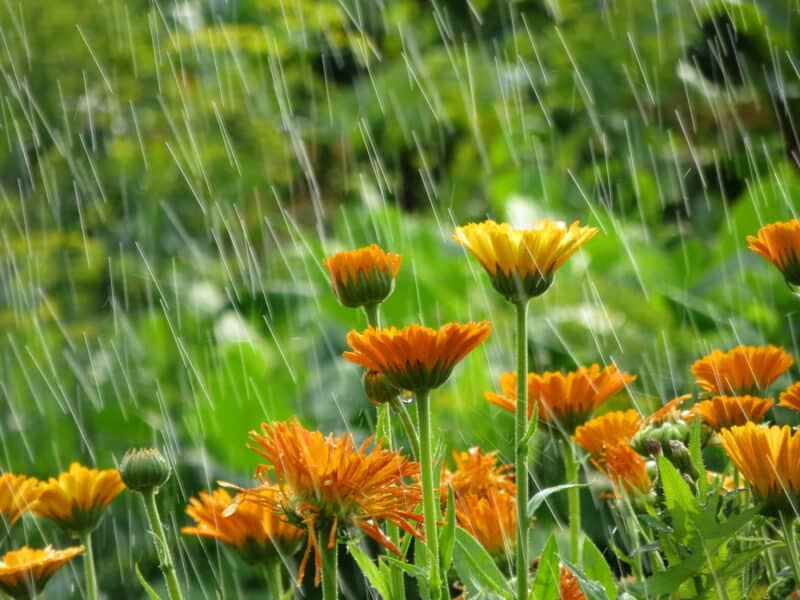
Once the plant is infected, the disease may lay dormant, and take several months before the signs of infection begin to show. In citrus trees, it usually shows up as the fruit begins to ripen.
In apple trees and roses, when spring rolls around, the fungi of V. inaequalis and D. rosae that have over-wintered shoots spores into the air. The wind takes the spores to newly developed foliage, twigs, and flowers.
The spores need several hours of moisture in humid conditions to begin infection. Within 15 days, the first of the spots begin to appear.
The spores of the new infection are spread by wind or rain and irrigation splash to other parts of the plant, and to new plants and trees.
The tree may suffer from small harvests and poor-quality fruit if this cycle repeats itself over multiple seasons.
Signs of black spots in roses and other susceptible plants can appear in as little as four days after infection. Repetitive infections can result in fewer and fewer blooms as the energy of the plant dissipates through leaf drop and defoliation.
Recognizing the Signs of Black Spot
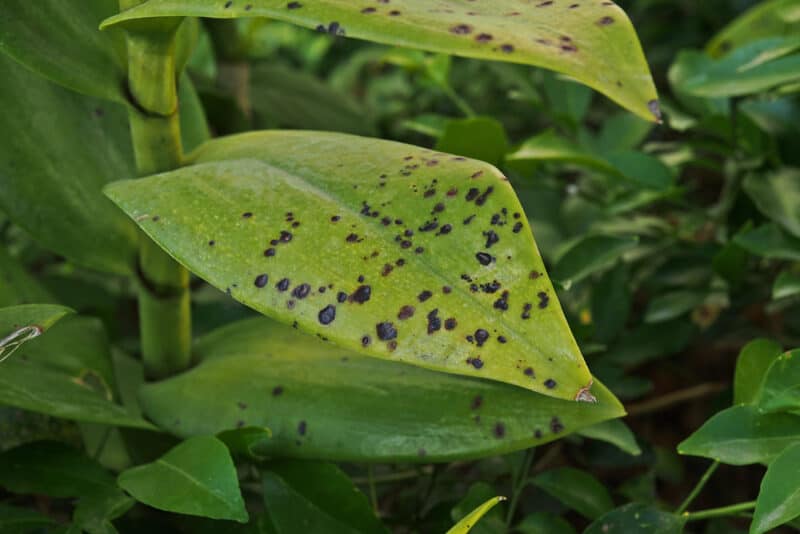
Although we are covering a variety of black spot varieties and fungi, the symptoms are the same. Pay attention to your plants, especially when the weather is humid, with a lot of wet and dry periods combined with high relative humidity.
Black spots are circular with rough edges. The edges can be smooth or feathery and the spots vary in size. They can be small dots or up to 1/2 an inch in diameter.
Sometimes they are light brown, other times they are dark black.
Generally, the lower leaves, foliage, flowers, and fruit are infected first. It doesn’t take long before the entire plant is infected, though.
Over time, the black spot on the foliage will turn the leaves yellow, and then they will drop off. Defoliation is common with black spot, especially when the infection is severe. Repeated infections affect the vigor of plants over time.
How to Manage Black Spot
This is a mixture of providing the plants with proper growing conditions and preventative measures once the infection occurs.
1. Good Airflow
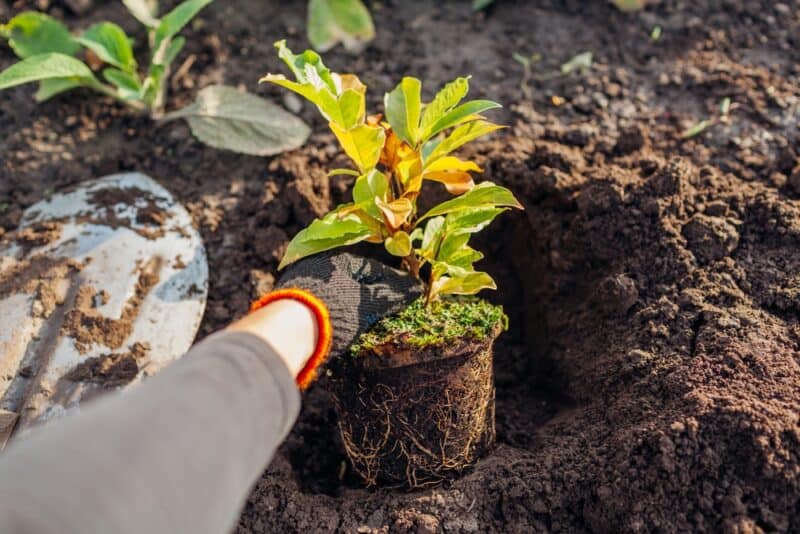
When you plant your plants, don’t space as many as you can in one area. Airflow is important to keep pests and diseases at bay; black spot is no different. Pay attention to the required spacing of the plants you are using, and prune it to ensure it doesn’t grow too dense in the center.
2. Garden Hygiene
Prevention of black spot is an all-year process. It overwinters on leaf litter on the ground, so rake up and disposed of leaf litter soon as possible. This should be done all year if you live in humid environments.
Clean all garden tools regularly with water and bleach.
3. Pruning
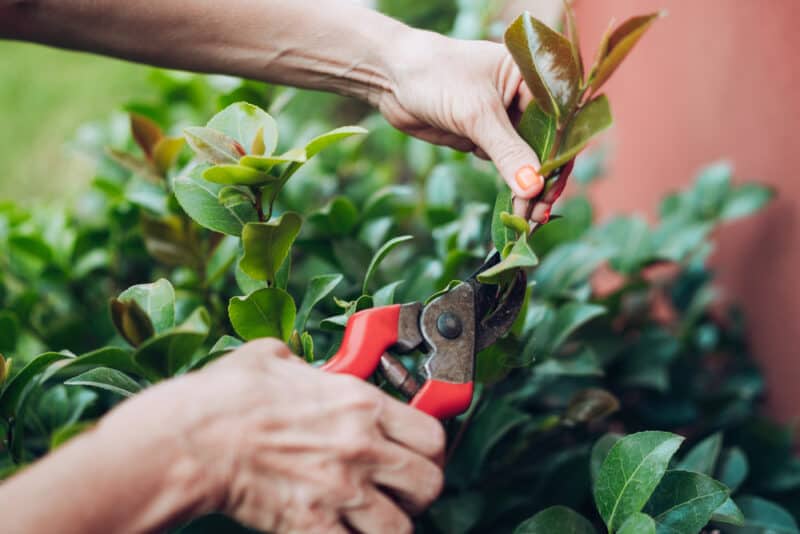
Prune the infected plants as best you can. Remove badly infected leaves on the plant and from the ground when they fall. Prune out any branches or stems that show infection.
This is important because spores can sit on the parts of a plant to be spread when the conditions are right and it rains or you water overhead.
4. Mulch Susceptible Plants
Apply a thick layer of mulch around the base of the plants. The mulch will stop splashes from infected soil if spores are present. In humid or sub-tropical areas, don’t use wood as mulch, as this can cause many types of fungi to form.
5. Spray With Sulfur
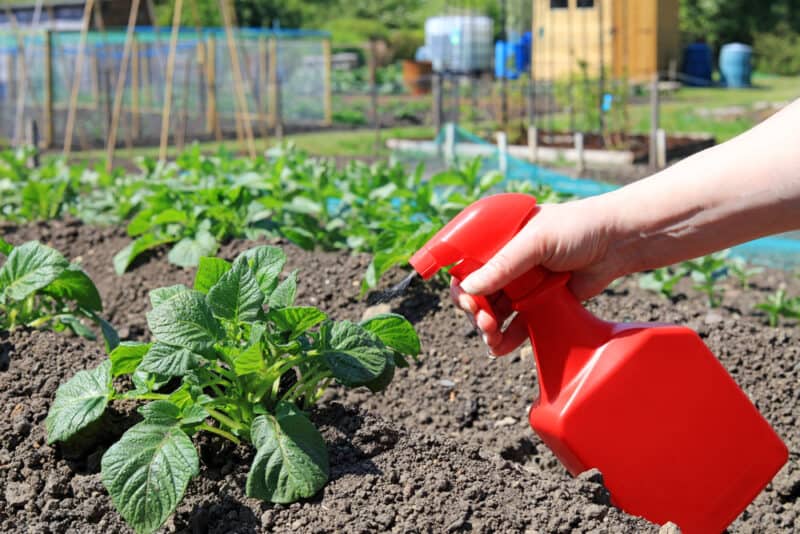
Sulfur is very effective in preventing fungal diseases like black spot. I include sulfur in my spray regime because it also targets many problems. I prefer to spray it, so buy a powder that can be mixed with water. It does smell a little bit, but that disappears quickly.
6. Copper Sulfate
Use a fungicide that contains copper sulfate. This is better if you use it as a preventative in spring before the symptoms appear, but it can also limit or stop the spread. You probably won’t completely eliminate a black spot infection with copper.
7. Neem Oil
This is my favorite tool in my garden shed. It is an organic pesticide and fungicide made from natural ingredients. It gets inside a plant as well as coats the foliage. Regular sprays of neem oil helps to prevent many issues like black spot. It doesn’t control black spot, though.
Don’t spray in sunny conditions, as it can burn the foliage.
Neem oil can harm beneficial insects like bees, so spray in the early evening when the bees have retired for the day.
8. Plant Cultivars Resistant to Black Spot
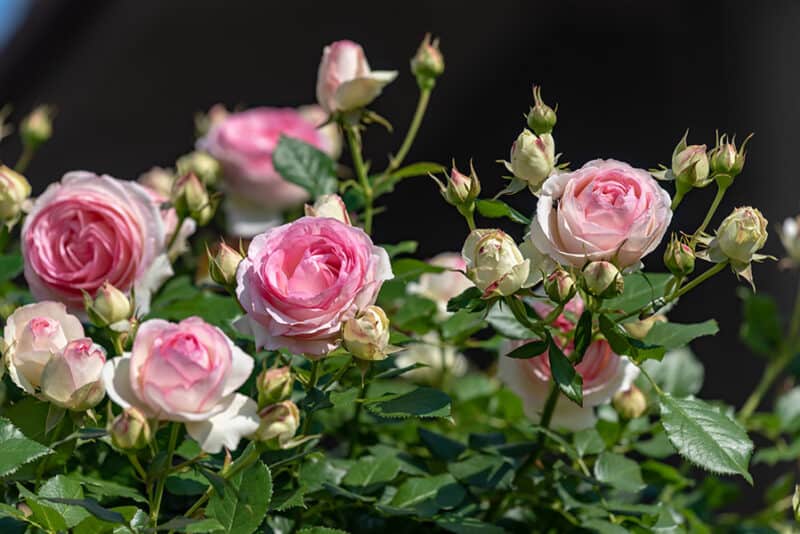
Depending on the plant you choose, see if cultivars are resistant to black spot. This is especially important in humid, wet, or sub-tropical areas.
For roses, look for ‘Elizabeth Taylor,’ ‘Lady X,’ ‘Mister Lincoln,’ ‘Peace,’ ‘Princess of Monaco,’ ‘Tiffany,’ ‘Nearly Wild,’ ‘Queen Elizabeth,’ ‘Sexy Rexy,’ ‘Distant Drums,’ ‘Knock Out,’ and ‘Wanderin’ Wind.’
‘Finger Lime,’ ‘Shatian You,’ and most pomelo and sour oranges are resistant, according to a study published by the American Society for Horticultural Science.
9. Fungicides
There are a few conventional fungicides that are highly effective against black spot, especially if you alternate them every two weeks. Manxozeb, Captan, and Chlorothanonil are all excellent options if you’re determined to eliminate this disease and nothing else is working.
Home-Made Remedies For Black Spot?
If you do a quick internet search for black spot home remedies, you’ll no doubt come across the so-called Cornell method. This involves using baking soda or potassium bicarbonate. This is typically mixed with something like oil, dish soap, or vinegar.
This can be somewhat helpful for stopping or limiting the spread, but it won’t eliminate the disease. You also must be careful because vinegar and dish soap can cause sun scorching. The best thing seems to be horticultural oil.
Use this sparingly since baking soda is toxic to plants.
Prevention is the best cure for black spot, but if it appears, make sure you remove as much of the infected foliage from the ground as possible. Spray regularly, space the plants properly, and don’t be afraid to prune infected stems and branches if the issue is a bad infection.
Spécialiste jardin et bricolage, j’adore rédiger des articles qui aide les lecteurs à améliorer leur maison ! Souvent connecté, n’hésitez pas à poser vos questions !




















